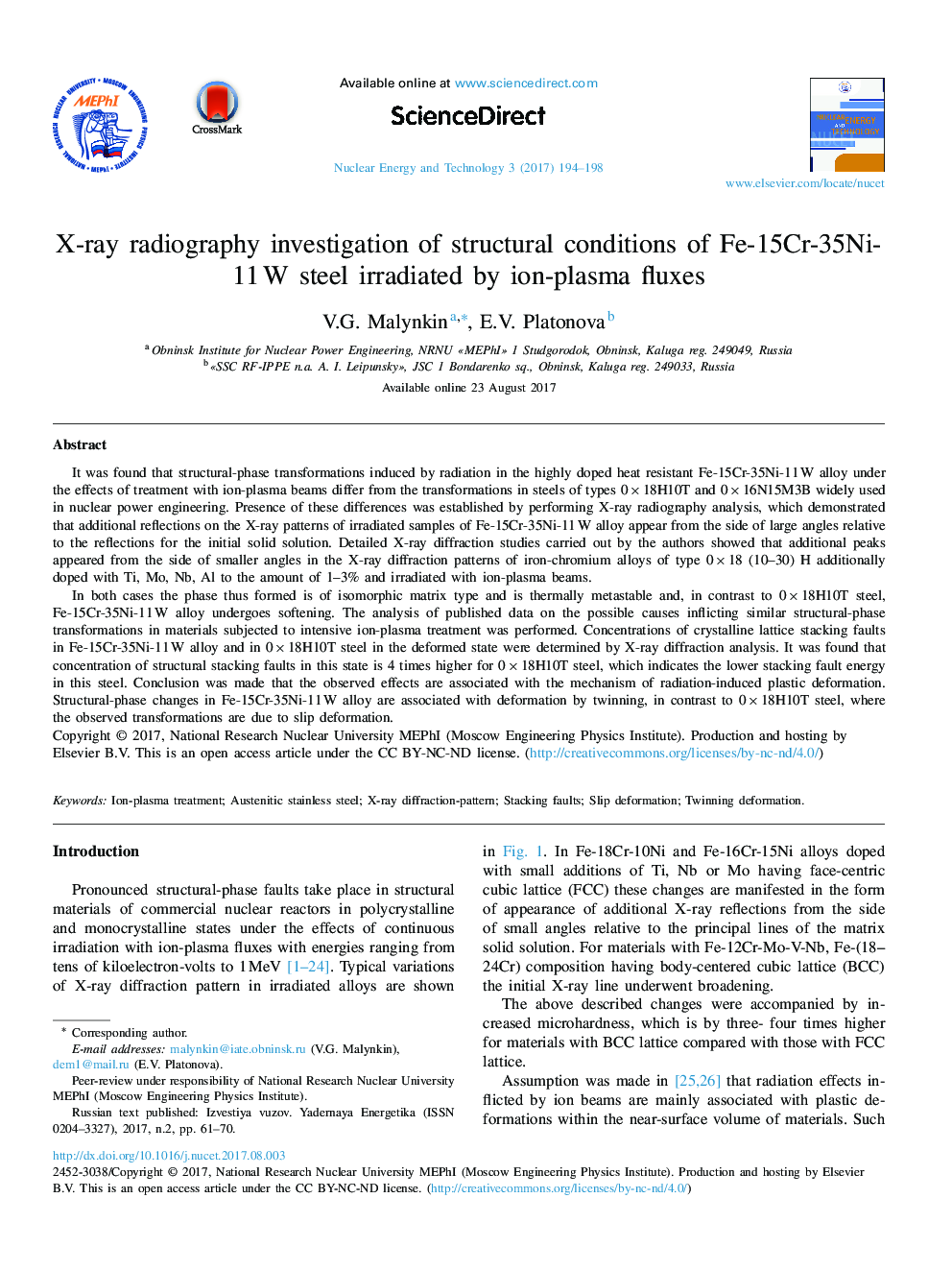| Article ID | Journal | Published Year | Pages | File Type |
|---|---|---|---|---|
| 6846064 | Nuclear Energy and Technology | 2017 | 5 Pages |
Abstract
In both cases the phase thus formed is of isomorphic matrix type and is thermally metastable and, in contrast to 0â¯Ãâ¯18H10T steel, Fe-15Cr-35Ni-11â¯W alloy undergoes softening. The analysis of published data on the possible causes inflicting similar structural-phase transformations in materials subjected to intensive ion-plasma treatment was performed. Concentrations of crystalline lattice stacking faults in Fe-15Cr-35Ni-11â¯W alloy and in 0â¯Ãâ¯18H10T steel in the deformed state were determined by X-ray diffraction analysis. It was found that concentration of structural stacking faults in this state is 4 times higher for 0â¯Ãâ¯18H10T steel, which indicates the lower stacking fault energy in this steel. Conclusion was made that the observed effects are associated with the mechanism of radiation-induced plastic deformation. Structural-phase changes in Fe-15Cr-35Ni-11â¯W alloy are associated with deformation by twinning, in contrast to 0â¯Ãâ¯18H10T steel, where the observed transformations are due to slip deformation.
Related Topics
Physical Sciences and Engineering
Energy
Nuclear Energy and Engineering
Authors
V.G. Malynkin, E.V. Platonova,
